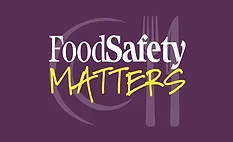
Pest Control
Pest control focuses on preventing insects and animals from entering agricultural areas, food processing facilities, storage facilities, or food shipments in transit so that harborage points are minimized and food safety and quality are not compromised.
Articles
More ArticlesPodcasts
More PodcastsNever miss the latest news and trends driving the food safety industry
Newsletters | Website | eMagazine
JOIN TODAY!Copyright ©2026. All Rights Reserved BNP Media.
Design, CMS, Hosting & Web Development :: ePublishing



